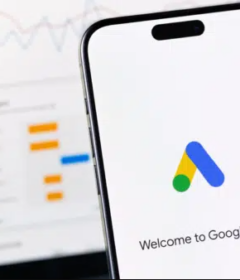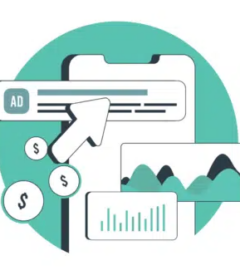Google brings AMP to email: What does this mean for email marketing?

Have you ever counted the number of premature obituaries you’ve read for email? The platform has taken some flak in recent years, but as a method for communicating with consumers it’s stronger and more effective than ever.
That view was reinforced earlier this month with Google’s announcement that it would bring the ‘Accelerated Mobile Pages’ open source project to the platform.
The move signaled the internet giant’s plan to redevelop its Gmail service and turn email into a ‘dynamic, up-to-date and actionable’ service, in line with its long-held desire to make the internet faster. In short, it wants to make it more interactive and more efficient.
Right now, most organizations consider an open rate of above 25% and a click-through rate (CTR) of more than 5% impressive, and Google wants to improve that by radically altering the make-up of each individual email.
The Silicon Valley giant has recognized the impressive longevity and adaptability of email. Despite the abundance of browsing data being collected online every day, it remains one of the most pervasive and effective forms of direct marketing; according to the Direct Marketing Association in the US, the median email marketing ROI (122%) is four times higher than any other channel.
So, Google has tasked its creative minds with revamping and progressing its email platform, with this the immediate result.
What will this mean in the short term?
Your favorite brands will now be able to integrate new interactive tools into email, such as the ability to browse websites, RSVP to events and complete forms without you leaving the platform.
Initially available as a ‘preview’ version to developers, the company plans to roll out support for the service to Gmail later in 2018. The service will continue to evolve, and in the future we’re likely to see entire transactions taking place within the body of an email.
Relatively mundane consumer tasks such as booking flights, writing reviews, ordering new clothes and browsing the wider web will all take place through one interface, removing the need for consumers to waste time navigating individual sites or search engines and creating a unified experience.
What’s driving this move?
There appear to be three main drivers on Google’s part: improved UX, more access to consumer data, and an increased scope to sell digital advertising. By providing a more streamlined service which facilitates commercial transactions online, Google will have greater scope to expand its offering to advertisers.
This will be based on the detailed insights gained from witnessing millions of consumer transactions within its Gmail platform, with this data used to build a more comprehensive digital persona for each individual user.
What are the benefits for consumers?
Google will undoubtedly be a beneficiary, but the company promises that consumers will benefit most from the change. Central to this is the promise of an improved experience of ecommerce when navigating the web. This will happen through a more direct relationship between consumers and their favorite brands, and fewer laborious administrative stages to complete a transaction or make an appointment.
By integrating live data into the platform, emails will be able to demonstrate a brand’s inventory in real time – so no more outdated discount offers, or appointments showing as available which have already been filled.
The move will also help refresh the occasionally cumbersome format of certain marketing communications. Email newsletters for example will be given a new dimension, giving consumers far more succinct and actionable content, while landing pages with extensive web capture forms will be phased out as brands collect further information on email and other sources.
How will Google’s position be strengthened?
As with any format change, it will take some time for AMP to be fully integrated into Gmail, so don’t expect any radical changes any time soon. Once integrated, it will also take time for brands to get on board and realize the ROI they will get from their spend. Moreover, as the change will be limited to Gmail only, we’re unlikely to see the entire format of email revolutionized overnight.
Nonetheless, it will be fascinating to see how Google’s competitors respond to the introduction of the AMP format. Many are keen to prevent the company’s hold over the web from growing, and will no doubt push forward with alternative propositions to AMP.
Facebook’s ‘Instant Articles’ service, for example, has long been viewed as an alternative platform for ‘snackable’ content, and was launched as long ago as the spring of 2015 – a year prior to the launch of the AMP.
Email’s enduring success has traditionally been ascribed to its simple format, so it’ll also be fascinating to see what kind of response there is from consumers.
Historically, they prefer communications which are less invasive and don’t interrupt their day to day activity, as can be the case with other direct marketing platforms. Many also prefer to retain their freedom of choice when it comes to purchasing, rather than follow a recommendation from a dispassionate algorithm. But the opportunity is there for marketers to rise to raise the bar when it comes to driving email engagement.
What does this mean for marketers?
From a practical perspective, AMP is likely to see a change in the performance metrics used by marketers when reviewing the success of any given campaign. CTRs in particular may be replaced by an alternative measure, given consumers will no longer need to exit an email to complete a transaction.
From a more long-term, strategic perspective, Google needs to put personalization at the heart of this change to make it successful. If the content offered in each email isn’t highly personalized to each individual user – based on the extensive raft of data Google already possesses – then consumers will turn away from the platform in favor of a more holistic marketing experience.
Artificial Intelligence (AI) will undertake a large part of this work. Indeed, AI marketing tools are already widely available and have been deployed by some of the world’s biggest brands to help deliver personalization in their email marketing campaigns.
To date, these technologies have largely been deployed to help with execution, but in future, expect to see AI take care of every aspect of an email, right down to the send time, design, subject line and body of text, including bespoke offers for each individual recipient.
It will be particularly crucial when it comes to creativity, which has been absent from email for many years due to the predominance of the ‘static’ HTML format. Marketers have struggled to create engaging content within the platform previously, as emails have had to rely on basic content – straightforward written copy and primitive designs/imagery – to ensure they reach target recipients.
With AMP, however, technology is finally catching up with the promise of marketing. Email marketers will need to get their creative juices flowing and use the change to embrace more engaging content strategies, as more simplistic email formats with limited scope for interaction will no longer entice customers.
The email platform continues to evolve, adapt and reinvent itself, despite premature predictions of its demise, and it looks set to form an integral part of direct marketing strategies for the foreseeable future.
Remember what I said about premature obituaries? Well, to reinvent the age-old proverb: email is dead. Long live email.



